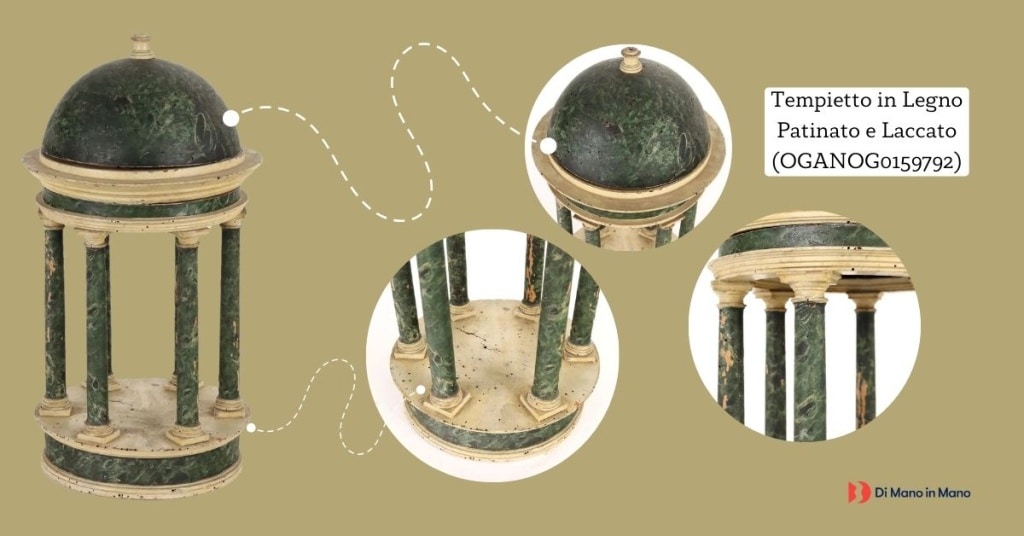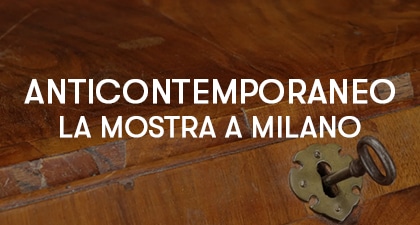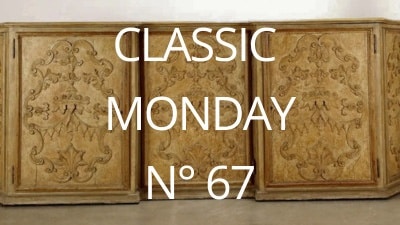
In today’s article, we will talk about the birth of the so-called “architectural caprices” and present some examples from the Di Mano in Mano catalog, ranging from the usual use in painting to other decorative arts.
The Birth of the Caprice
The “Caprice” is a style that has its roots in the Renaissance but develops extensively in the 18th century, thanks to the progress of archaeological discoveries from the excavations of Herculaneum and Pompeii. The decorative taste increasingly looks to ancient Rome, laying the foundations for what will become, after the middle of the century, the neoclassical style.
During this period, a trend emerges to compose the landscape through the free combination of real or fantastical architectural elements, ancient ruins reworked, in a variety of declensions aimed at reproducing landscape settings and recovering ancient architectural remnants.
In the second half of the 18th century, the reproduction of temples in sculpture, painting, or as part of inlaid decoration began to spread.
Artistic Caprices
The catalog offers an example of an architectural caprice depicted in a painting contemporary to the period, portraying ruins of a large architectural structure that nostalgically towers over the depiction of a city crossed by a large river, which then winds into the forest.
Another example of a technique that became popular during the same period is micromosaic, and we present an example depicting a scene of common people gathered around the Triton Fountain in the Piazza della Bocca della Verità, with the Temple of Hercules the Victorious in the background.
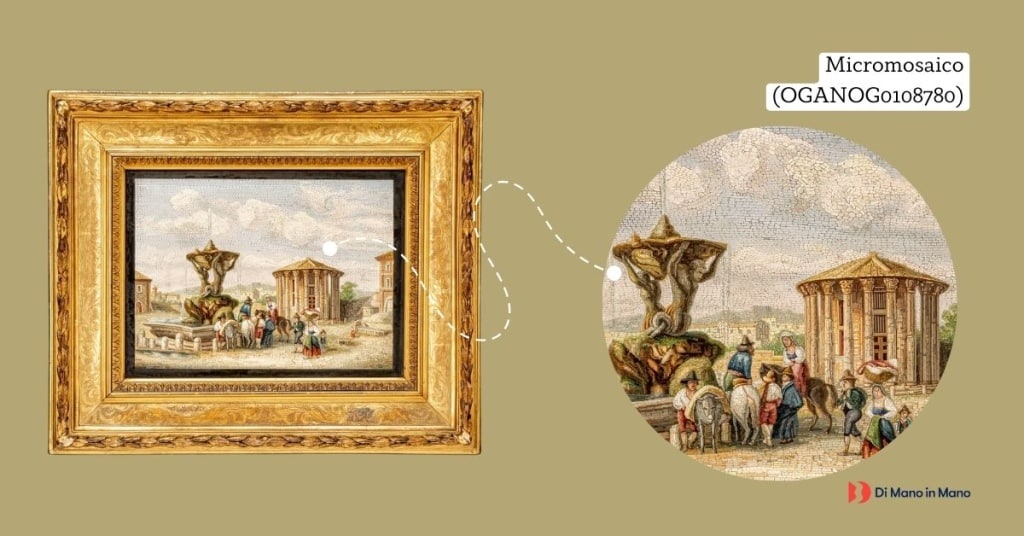
Frequently, this type of design used as a model the ruins and plans of existing archaeological temples.
Caprices in Decorative Arts
The third type of representation we will discuss concerns inlay work on furniture, such as the French chest of drawers by Andre Louis Gilbert, dating from the same period, and featuring a yellow breccia top.

Here, the so-called architectural caprices are presented in the form of inlays on the front and sides, showcasing different views of the same architectural structure.
In the case of the English chest of drawers offered in the catalog, we find handles made of embossed sheet metal, decorated with the same temple motif, confirming how much these architectural caprices were appreciated.
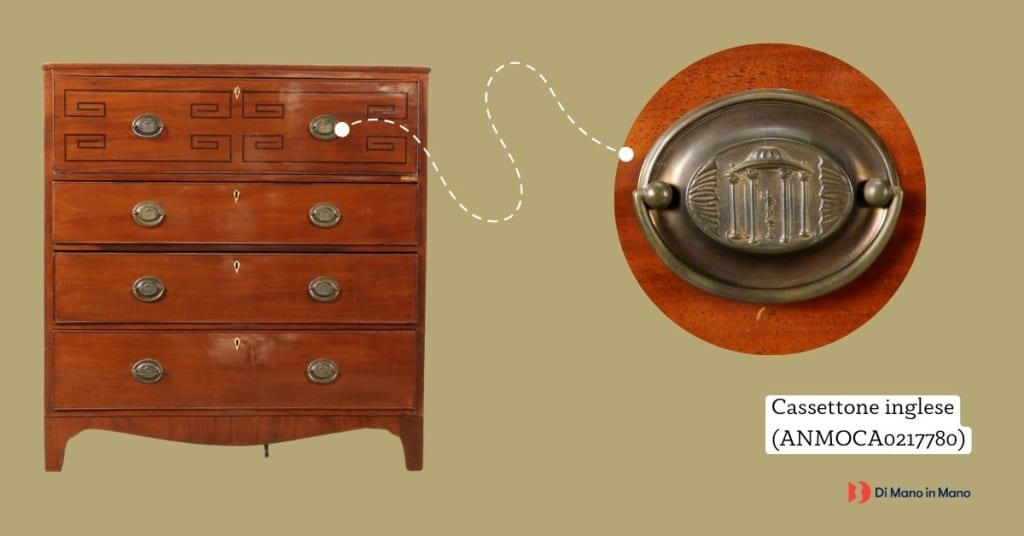
Lastly, we can talk about the centerpieces that the nobility of the period commissioned to impress their guests during banquets. Often, these centerpieces featured true architectural structures in miniature that replicated the three-dimensionality of ancient objects, such as the neoclassical monopteros shown below, made of patinated and lacquered wood with faux marble finish, a dome with a pinnacle, and six columns with Doric capitals, resting on a circular base.
